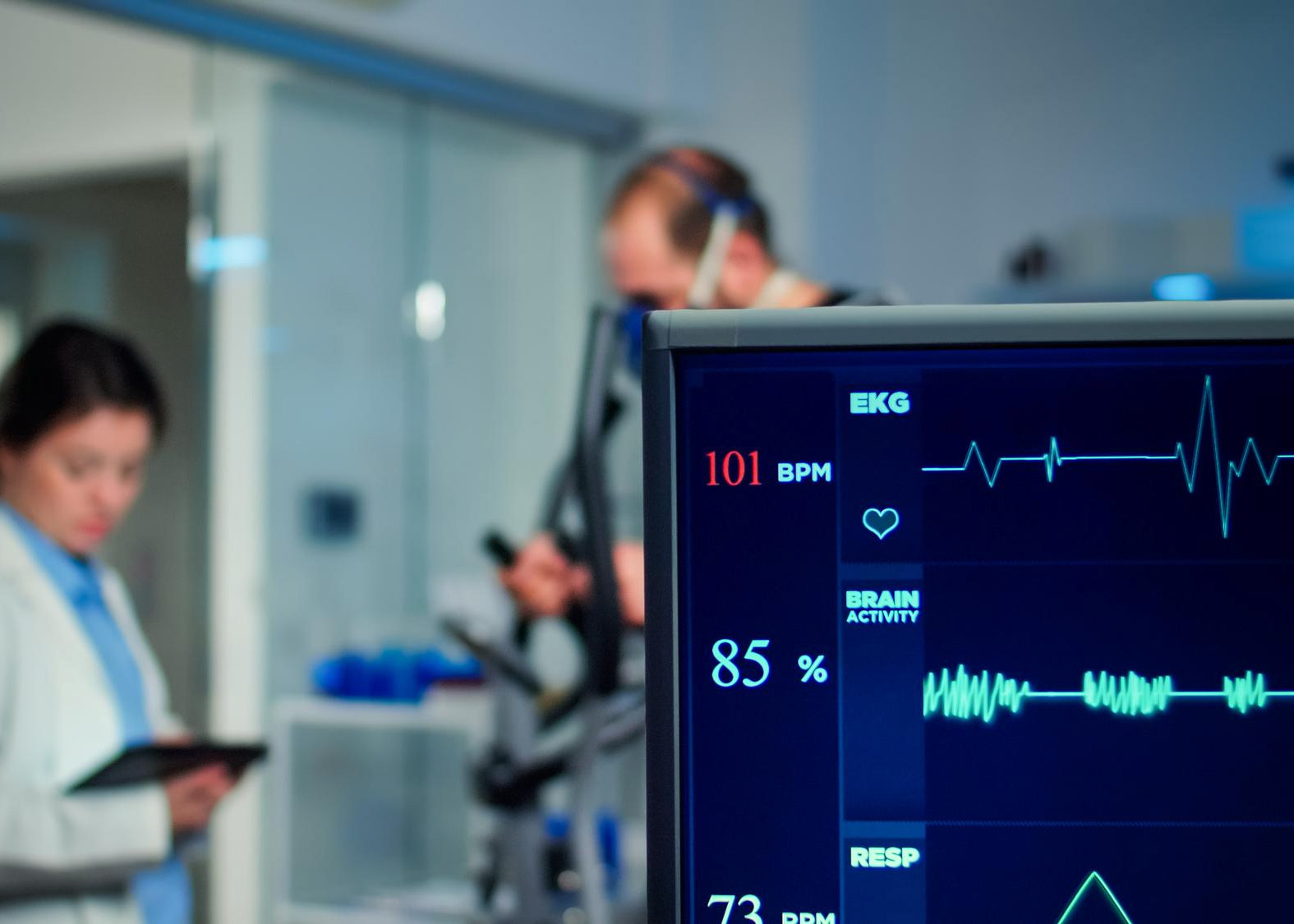Benefits and Guideline Recommendations for Strain Imaging and Echocardiography in the Cancer Cohort of Patients
Cardio-oncology is a rapidly evolving field that addresses the cardiovascular complications related to cancer therapies. Many cancer treatments, particularly chemotherapies and targeted therapies, have been associated with cardiovascular toxicity. As survival rates in cancer patients improve, the focus on long-term health outcomes, including cardiac function, has become increasingly important. In this context, echocardiography, especially strain imaging, has become a vital tool in the early detection and management of cardiotoxicity. This article outlines the benefits of strain imaging in cancer patients, along with guideline recommendations for its use in clinical practice.
Benefits of Strain Imaging in Cancer Patients
Strain imaging is a sensitive echocardiographic technique that assesses myocardial deformation, providing detailed information about myocardial function before overt changes in left ventricular ejection fraction (LVEF) are detectable. Here are the primary benefits of using strain imaging in the cancer cohort of patients:
- Early Detection of Cardiotoxicity: One of the most significant benefits of strain imaging is its ability to detect early subclinical myocardial dysfunction, even before a noticeable decline in LVEF. Traditional echocardiography, which focuses on LVEF, often misses subtle changes in myocardial function, as LVEF can remain preserved until significant damage has occurred. Strain imaging, particularly global longitudinal strain (GLS), offers more sensitive and specific measurements of myocardial function, enabling early intervention to prevent the progression of cardiotoxicity. Chemotherapeutic agents like anthracyclines and targeted therapies like trastuzumab (Herceptin) are known to cause cardiotoxicity. Early detection with strain imaging allows for the adjustment of cancer treatment, such as reducing the dose or switching to less cardiotoxic alternatives, thereby preventing irreversible cardiac damage.
- Prognostic Value: Studies have shown that reductions in GLS are predictive of future reductions in LVEF and subsequent heart failure. A decrease in GLS by more than 15% from baseline is considered an early marker of cardiotoxicity. This prognostic value is particularly useful in cancer patients who may be asymptomatic but at high risk for developing heart failure. Identifying these patients early allows for timely intervention with cardioprotective strategies, such as beta-blockers and ACE inhibitors, which have been shown to mitigate cardiotoxicity and improve outcomes.
- Non-invasive and Repeatable: Echocardiography, including strain imaging, is a non-invasive and widely available imaging modality that can be performed at the bedside without the need for ionizing radiation or contrast agents. This is especially beneficial in cancer patients who may undergo frequent imaging due to their treatment regimens. Strain imaging can be repeated regularly to monitor myocardial function over time, ensuring that any decline in cardiac function is promptly identified and managed.
- Assessment of Regional Myocardial Function: Strain imaging provides detailed information about the function of individual myocardial segments, which can be particularly helpful in detecting regional differences in cardiac function. Certain cancer therapies may cause more localized myocardial damage, which may not be apparent on standard echocardiography. By detecting regional myocardial dysfunction, strain imaging can offer insights into the mechanisms of cardiotoxicity and guide personalized treatment strategies.
- Complementary to LVEF: While LVEF remains an essential parameter in assessing cardiac function, it is a relatively crude measurement that may not fully reflect early myocardial dysfunction. Strain imaging complements LVEF by offering a more comprehensive assessment of myocardial health. This combination of metrics allows clinicians to make more informed decisions about the management of cancer patients at risk for cardiotoxicity.
Guideline Recommendations for Strain Imaging in Cancer Patients
Several professional societies, including the American Society of Echocardiography (ASE), the European Society of Cardiology (ESC), and the American Heart Association (AHA), have developed guidelines for the use of echocardiography and strain imaging in the monitoring of cancer patients. The following are key recommendations for the use of strain imaging in this population:
- Baseline Assessment: It is recommended that all cancer patients undergoing potentially cardiotoxic treatments receive a baseline cardiovascular assessment before starting therapy. This assessment should include a comprehensive echocardiogram, with strain imaging (GLS) to establish baseline myocardial function. This is especially important in patients receiving anthracyclines, trastuzumab, or radiation therapy to the chest, as these treatments are associated with a high risk of cardiotoxicity.
- Routine Monitoring During Therapy:
Routine echocardiographic monitoring is recommended during cancer treatment, with the frequency of monitoring dependent on the specific therapy and the patient’s risk profile. For example, patients receiving anthracyclines should have echocardiograms after every 100 mg/m² of cumulative dose. Patients receiving trastuzumab should have echocardiograms every 3 months during therapy. Strain imaging should be included in these routine echocardiograms, as it provides an early indicator of cardiotoxicity. A reduction in GLS of more than 15% from baseline should prompt further investigation and consideration of modifying cancer therapy or initiating cardioprotective medications.
- Post-treatment Follow-up: Cardiac monitoring should continue after the completion of cancer therapy, as cardiotoxicity can develop months to years after treatment. Guidelines recommend echocardiography, including strain imaging, at 6 months and 12 months post-treatment, with additional follow-up as needed based on the patient’s risk factors and cardiac findings.
- Strain Imaging in High-Risk Patient: Certain cancer patients are at higher risk for cardiotoxicity, such as those with pre-existing cardiovascular disease, older age, or high cumulative doses of cardiotoxic therapies. In these patients, more frequent monitoring with echocardiography and strain imaging is recommended. This approach allows for the early identification of cardiotoxicity in patients who are most vulnerable to developing cardiac complications.
- Use of GLS Cutoff Values: The ASE and ESC recommend using a GLS cutoff value of more than 15% reduction from baseline as a marker of significant cardiotoxicity. This threshold has been validated in several studies and provides a practical tool for identifying patients who may benefit from early intervention. However, it is essential to consider individual patient factors, and clinicians should not rely solely on strain imaging but integrate it with other clinical and imaging findings.
- Integration with Multimodality Imaging: While strain imaging is a powerful tool, it is often used in conjunction with other imaging modalities to provide a comprehensive assessment of cardiac function. Cardiac MRI is particularly useful in cases where echocardiography may be suboptimal, such as in patients with poor acoustic windows. Cardiac MRI can provide additional information on myocardial fibrosis and edema, which may be seen in cancer patients with cardiotoxicity. Strain imaging, combined with cardiac MRI, can offer a more detailed understanding of the myocardial changes associated with cancer therapy.
Conclusion
- Strain imaging has become an indispensable tool in the management of cancer patients at risk for cardiotoxicity. Its ability to detect early myocardial dysfunction, predict future declines in LVEF, and provide detailed regional myocardial function makes it a valuable addition to traditional echocardiographic techniques. Guidelines from major cardiovascular societies recommend the routine use of strain imaging in cancer patients, both for baseline assessment and ongoing monitoring during and after cancer therapy. By incorporating strain imaging into clinical practice, clinicians can improve the early detection and management of cardiotoxicity, ultimately enhancing the long-term outcomes for cancer survivors.




